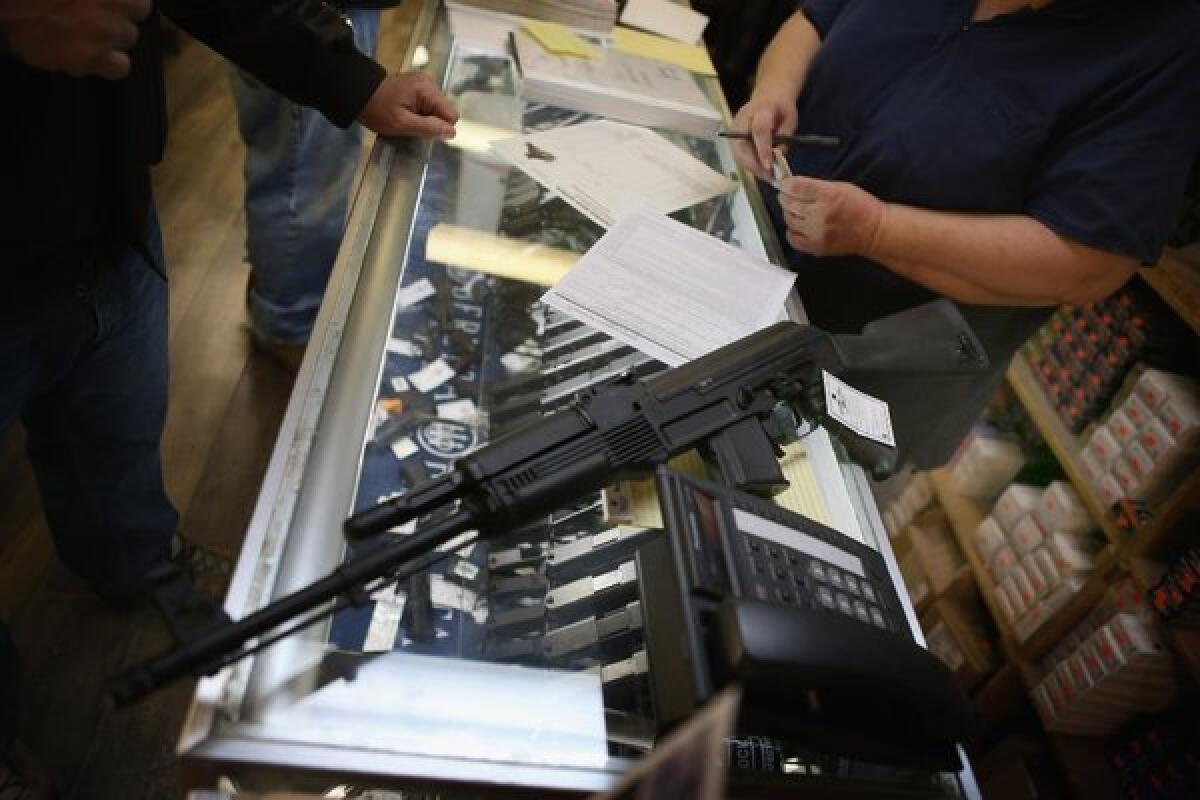Trying, again, to ban assault weapons

The 2011 shootings of Arizona Rep. Gabrielle Giffords and 18 other people in Tucson didn’t move the political needle. This summer’s shocking massacre of 12 people in an Aurora, Colo., movie theater was scarcely noticed in the halls of Congress. Yet backers of gun control apparently see signs that the blood-spattered halls of Sandy Hook Elementary School in Newtown, Conn., where 20 young children were killed Friday, will finally horrify and appall our nation’s leaders enough to prompt action against the tools of mass murder.
Gun control bills have arisen and been quietly shelved for a decade and a half in Congress, victims of a perception that any attempt to limit firearms amounts to political suicide. That belief arose after a Democratric-controlled Congress approved a 10-year ban on assault weapons in 1994; the Republican Revolution followed, with the gun-hugging GOP taking control of the House for the first time in 40 years and also wresting a majority in the Senate. The ban, of course, wasn’t the only reason for that shift, but many Democrats have taken it on faith ever since that gun control is a topic to be avoided.
There may be hope for change. On Sunday, California’s Democratic Sen. Dianne Feinstein said she would introduce an updated version of her 1994 assault weapons ban, which Congress allowed to expire in 2004, on the first day of the new session. President Obama has said he favors such a ban. Congressional opponents of gun control have been unusually silent, perhaps recognizing that putting a higher priority on the desire of collectors to possess military-style weapons than on the lives of children strikes most Americans as twisted.
SLIDESHOW: The 10 trigger-happiest states in America
That’s not to say we think Feinstein’s bill will end mass murder. Her last one didn’t. One problem was that in defining an “assault weapon,” the 1994 bill listed various characteristics — pistol grips, folding stocks, bayonet mounts, etc. — that could easily be tweaked by manufacturers. Take away the bayonet mount, for example, and an illegal weapon was suddenly legal. Also, its ban on high-capacity magazines for more than 10 rounds was ineffective because there was a massive supply of such magazines already in circulation. And though it banned the manufacture of new assault weapons, the hundreds of thousands of existing ones were still legal. There’s no convincing evidence that gun violence dropped as a result of the 1994-2004 ban. So why do we support reinstating it? Because ineffective bills can be improved, and the last one might have worked better if given more time — eventually, the supply of high-capacity magazines would have run out, for example. Feinstein’s new bill specifically restricts far more weapons than the old one.
Nolaw-abiding citizen needs a gun capable of killing dozens of people in minutes without the need to reload. And there’s no reason to make it easy for criminals to get them.
More to Read
A cure for the common opinion
Get thought-provoking perspectives with our weekly newsletter.
You may occasionally receive promotional content from the Los Angeles Times.






